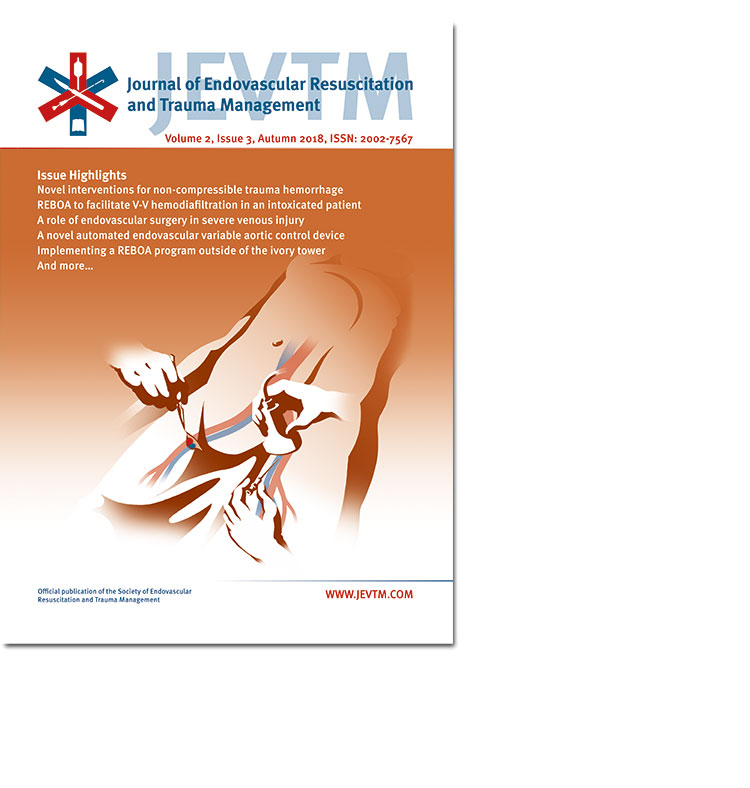Stepwise Reperfusion After Zone 1 REBOA: Is Repositioning to Zone 3 a Useful Maneuver?
DOI:
https://doi.org/10.26676/jevtm.v2i3.61Keywords:
REBOA, Shock, Ischemia-reperfusionAbstract
Background: One limitation of resuscitative endovascular balloon occlusion of the aorta (REBOA) is hemodynamic instability upon balloon deflation due to distal hyperemia and washout of ischemic metabolites. We sought to determine whether stepwise reperfusion after supraceliac (Zone 1) REBOA by transitioning to infrarenal (Zone 3) occlusion would mitigate the physiologic consequences of balloon deflation and decrease hemodynamic instability.
Methods: Twelve anesthetized swine underwent controlled hemorrhage of 25% blood volume, 45 minutes of Zone 1 REBOA, then resuscitation with shed blood. Standardized critical care began with deflation of the Zone 1 balloon in all animals, and continued for six hours. Half of the animals were randomly assigned to Zone 3 REBOA for an additional 55 minutes following Zone 1 balloon deflation.
Results: There were no differences in physiology at baseline, during the initial 30 minutes of hypotension, or during the 45 minutes of Zone 1 occlusion. After Zone 1 balloon deflation, there was no difference in proximal mean arterial pressure (pMAP) with or without Zone 3 occlusion or percentage of critical care time spent within the target pMAP range between 65 and 75 mm Hg. There were also no significant differences in peak lactate concentration or resuscitation requirements.
Conclusions: In an animal model of hemorrhagic shock and Zone 1 REBOA, subsequent Zone 3 aortic occlusion did not add a significant ischemic burden, but it also did not provide significant hemodynamic support. The effect of this strategy on functional outcomes warrants further study. Continued investigation is necessary to determine optimal resuscitative support strategies during reperfusion following Zone 1 REBOA
Published
How to Cite
Issue
Section
License
Copyright (c) 2018 Journal of Endovascular Resuscitation and Trauma Management

This work is licensed under a Creative Commons Attribution 4.0 International License.
Authors of content published in the JEVTM retain the copyright to their works.
Articles in the JEVTM are published under the terms of a Creative Commons CC BY 4.0 license, which permits use, downloading, distribution, linking to and reproduction in any medium, provided the original work is properly cited.




